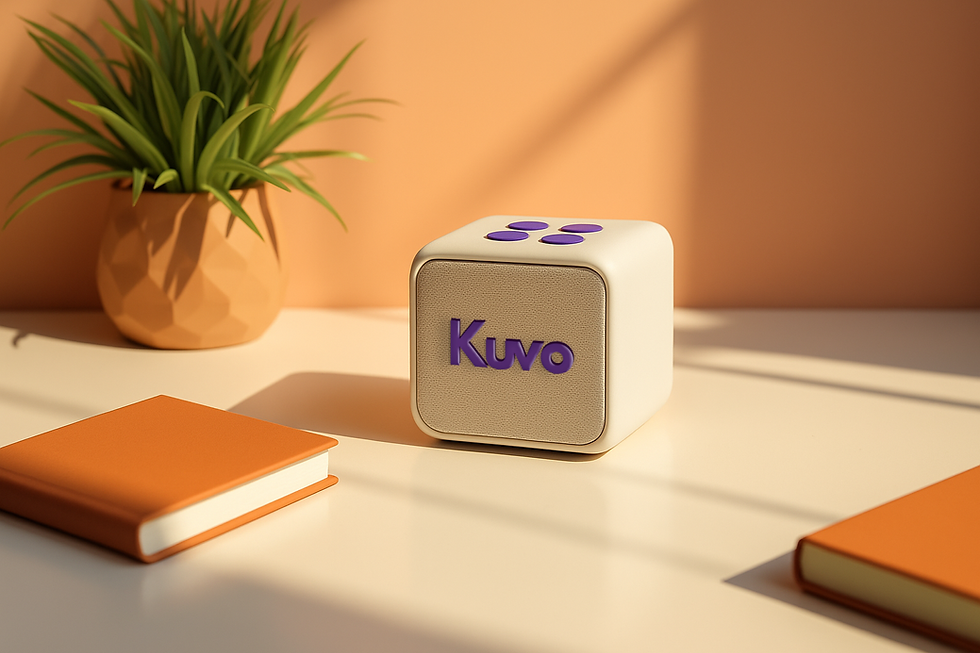Learning to Learn: Study Strategies for Kids at Home and School
- Santiago Marván
- Jul 31
- 3 min read
Updated: Aug 14

Studying is not a skill children pick up on their own. While natural curiosity is a powerful ally, most kids need guidance to develop study strategies that help them organize information, understand it, and remember it.
These skills are essential for fostering autonomy, reducing school frustration, and building lasting learning habits. The best part? Parents and teachers can teach them early using simple, practical tools.
📚 What Are Study Strategies and Why Do They Matter?
Study strategies are methods and tools that help children learn more effectively. They go beyond rote memorization, focusing on understanding, organizing, connecting ideas, and self-regulating.
Good study strategies:
Improve focus and concentration
Strengthen reading comprehension
Help with time management and planning
Boost confidence in facing school tasks
Reduce stress before tests or big assignments
When kids learn these strategies young, they build executive function skills that make learning easier for life.
💡 Practical Strategies for Kids

Here’s a list of study strategies parents and teachers can apply at home or school to make learning more structured and enjoyable:
1. Have a Fixed Study Spot
Consistency helps the brain focus. Choose one quiet, well-lit place for homework or study time.
Tip: Create a “study kit” with pencils, markers, sticky notes, and rulers to avoid constant interruptions.
2. Organize the Study Space
A tidy environment reduces distractions. Keep materials handy: notebooks, books, and supplies ready to use.
Tip: Use bins, boxes, or labeled shelves for quick cleanup and access.
3. Plan Study Time
Help children anticipate tasks and learn time management. Use visual calendars, stickers, or color coding to organize weekly assignments.
Tip: Plan the week together and assign tasks by color based on subject or difficulty.
4. Read with Intention
Teach kids to underline key ideas, ask questions, or summarize after reading.
Tip: Ask them to retell the text in their own words or draw a picture of what they understood.
5. Use Visual Supports
Mind maps, timelines, diagrams, or posters make concepts more engaging and easier to recall.
Example: After a science lesson on planets, draw orbits with names and key facts.
6. Break Big Tasks into Steps
Long assignments feel overwhelming. Split them into small, achievable steps.
Example: A presentation becomes 1) choose a topic, 2) research, 3) make notes, 4) rehearse.

7. Turn Review into Games
Repetition works best when it’s fun. Use flashcards, trivia games, or family quiz nights.
Kuvo Tip: Kuvo’s interactive voice-based stories and quizzes can turn study review into playful learning.
8. Try the Spaced Repetition Technique
Reviewing material over several days builds stronger memory than cramming in one session.
Tip: Schedule 5–10 minute “refresh” sessions every 2–3 days.
9. Use the Pomodoro Technique for Focus
Study in short blocks (≈25 minutes) with 5-minute breaks, and take a longer break after 4 cycles.
Tip: Draw tomatoes (pomodoros) to check off each completed cycle—it makes time management visual and fun.
10. Include Active Breaks
Short breaks reset attention and reduce fatigue.
Tip: Every 30 minutes, stretch, walk, or do a 2-minute movement game.
11. Talk About What They Learned
Verbalizing knowledge strengthens memory and comprehension.
Tip: Let them “teach” you their lesson at dinner or during a car ride.
12. Recognize Effort, Not Just Results
Learning is an emotional process. Celebrating effort builds intrinsic motivation.
Tip: Use phrases like, “I’m proud of how organized you were,” or “You really focused well today.”
🌟 Learning How to Learn

The ultimate goal of study strategies isn’t just passing tests, it’s teaching children to learn autonomously.
“Learning how to learn” means:
Organizing and understanding information
Retaining and applying knowledge in new situations
Building confidence and curiosity for lifelong learning
When kids know how they learn best and have tools to succeed, they don’t just survive school, they thrive and enjoy discovering new things.
A Kuvo Note

Kuvo can turn study sessions into interactive, screen-free learning moments. Through stories, quizzes, and voice-based prompts, kids can:
Review lessons playfully
Reinforce memory without pressure
Stay curious and motivated to learn
Because learning should feel like discovery, not a chore.
References
Dawson, P., & Guare, R. (2018). Smart but Scattered. Guilford Press.
Jensen, E. (2005). Teaching with the Brain in Mind. ASCD.
Fernández, A., & Melgar, F. (2021). Aprender a aprender: Técnicas de estudio para niños y adolescentes. Editorial Planeta.
Papalia, D., & Martorell, G. (2022). Human Development Across the Lifespan. McGraw Hill.
Harvard Graduate School of Education (2023). Tools for Learning and Study Skills.



Comments